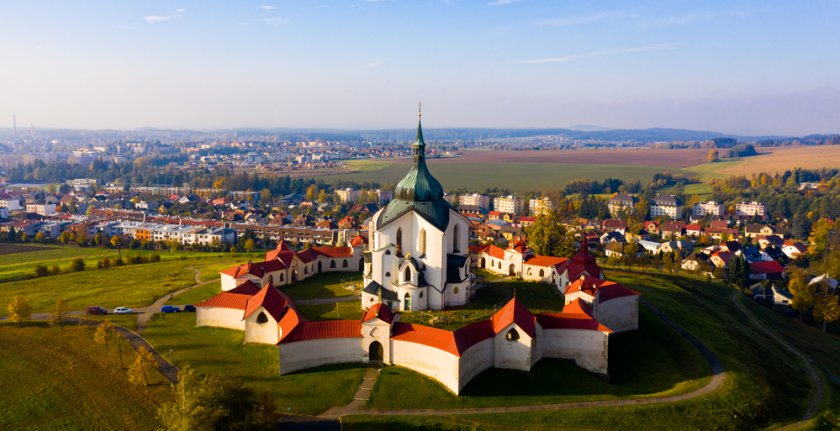Church of St. Jan Nepomucký Žďár nad Sázavou
The transformation of Gothic elements into the spirit of the Baroque style first appeared in our country at the beginning of the 18th century. The style is called Baroque Gothic and its best example is probably the Church of St. Jahorna Nepomuckého on Zelená hora in Žďár nad Sázavou, built between 1719 and 1722.
Information for visitors
Interesting facts Church of St. Jan Nepomucký Žďár nad Sázavou
The building material of the church sounds extremely dynamic, the weight of the masonry is almost denied, the spatial formations penetrate each other - all from the church of St. Jan Nepomucký creates a completely unique building, which completely deviated from the artistic standards of the time, and which is undoubtedly the greatest work of the Czech architect Jan Blažej Santini - Aichl.
The construction of the church was decided in 1719 by the abbot of the Žďár Cistercian monastery, Václav Vejmluva, and is associated with the canonization of Jan Nepomucký, whose language was found intact in his grave in the Cathedral of St. Welcome. The consecration of the church took place two years after the start of construction.
The legend of Jan Nepomucký
John of Pomuk, as the real name of this Czech saint sounds, lived during the reign of Wenceslas IV. He was a vicar general and his life was marked by disputes he had with Archbishop John of Jenštejn, who prevented the creation of a new diocese in western Bohemia. Then Wenceslas IV. he planned to punish all the guilty, but Jan of Jenštejn managed to escape, but not Jan of Nepomuk, who was cruelly tortured to death and eventually thrown into the Vltava. A year later, however, news of John's bravery began to spread. The assumption that John had supernatural abilities was further confirmed by the finding of his tongue when opening John's grave. But in 1973, scientists identified the mass as clotted blood in part of the brain.
Symbolism of the number five
The construction of the whole church is shrouded in the mystical aspect and symbolism of the number five. There are five altar niches, five entrances, 2 x 5 chapels, located around the central space of the church, five angels on the main altar, five stars and, last but not least, the church itself is built on the ground plan of a five-pointed star. The number five also symbolizes the five wounds of Christ and the five stars on the halo of St. Jan Nepomucký, which allegedly appeared on the surface of the Vltava after St. Jan Nepomucký thrown in.
Right at the top of the dome is the tongue as a symbol of St. Jan Nepomucký. This shape is repeated in the shapes of individual windows and is intended to symbolize that St. Jan Nepomucký did not reveal a secret - his tongue remained in his mouth.
The walls of the building are quite massive, and yet, thanks to the architectural design, it gives the impression of lightness. The whole space is mystically illuminated. You will not find any ornamental decorations or magnificent frescoes.
Around the church there are cloisters in the shape of a ten-pointed star, which are intended for pilgrims who could hide in them from bad weather.
Not only the church of St. Jan Nepomucký, but the whole area that surrounds it is absolutely unique. In 1994, it was inscribed on the UNESCO World Heritage List.
Author: Andrea Štyndlová

